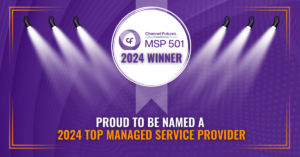How to set up a server for a Small Business
Do you have a small business and need a server? We at Advanced Networks can manage your server and all your IT needs. If you are determined to set up your server yourself, then in this guide on How to set up a server for a small business you will learn the starting steps putting in your own Small business server. If at any point you feel lost, feel free to fill out out contact form and a sales representative will get in touch with you.
The Hardware Requirements for Setting Up a Server for a Small Business
The first step in how to set up a small business server is deciding the hardware requirements. The hardware requirements depend on the type of server you plan to set up and the applications you intend to run on it. Generally, you’ll need a server with enough RAM, storage capacity, and processing power to meet your business’s demands. You’ll also need to decide between using a physical server or a virtual server.
Small businesses often need to invest in hardware to support their operations. Depending on the type of business, hardware requirements can vary widely. Generally, however, small businesses should plan for a reliable computer system with adequate storage capacity, a dependable internet connection, a printer, and a scanner.
For most small businesses, the computer system should comprise at least one desktop and one laptop. The desktop should have a reliable processor, sufficient RAM for the applications you use, and ample storage space for data and documents. The laptop should also come equipped with a reliable processor, sufficient RAM, and adequate storage.
The internet connection should be reliable and fast enough to support your business’s operations. A broadband connection is usually sufficient for small businesses.
Both the printer and scanner should be capable of producing high-quality documents and images. It’s recommended to use a multifunction device that combines a printer, scanner, and copier.
Depending on your business’s needs, additional hardware may be required. For example, a small business dealing with graphics or design might need to invest in a graphics tablet or a large format printer. Choose additional hardware based on your business’s specific requirements.
If you’re still unsure about the hardware requirements for setting up a server for a small business, contact us.
The Software Requirements for How to Setup a Server for a Small Business
Once you’ve chosen the hardware for your server, you need to determine the necessary software. Depending on the type of server you’re setting up, you may require an operating system, web server software, database software, and other applications. Additionally, you might need to install security software to protect your server from malicious attacks.
A small business server requires various software components to operate effectively. Depending on your business’s needs, software requirements may vary. Generally, you should include the following software:
1. Operating System:
A reliable operating system forms the foundation for any server. Common choices include Windows Server, Linux, or Mac OS X.
2. Server Management Software:
This software assists in managing the server, including monitoring, user authentication, and resource allocation. Common options include Webmin, cPanel, or Plesk.
3. Database Management Software:
Database management software helps handle different data types, such as customer information, payments, and inventory. Common options include MySQL, MS SQL, and PostgreSQL.
4. Web Server Software:
Web server software hosts websites and provides access to web applications. Popular options include Apache, Nginx, and IIS.
5. File Sharing Software:
File sharing software enables secure file sharing across a network. Common options include Samba, NFS, and FTP.
6. Security Software:
Security software safeguards the server and its data from malicious attacks. Typical solutions include firewalls, antivirus programs, and malware protection.
Having the right software in place empowers a small business server to become a powerful tool for businesses of all sizes.
Installation and Configuration for Setting Up a Server for a Small Business
 Once you’ve selected the hardware and software for your server, it’s time to install and configure it. Depending on the type of server you’re setting up, this may involve installing an operating system, configuring web server software, setting up a database, and configuring other applications. It’s essential to ensure that all components are correctly installed and configured before using the server.
Once you’ve selected the hardware and software for your server, it’s time to install and configure it. Depending on the type of server you’re setting up, this may involve installing an operating system, configuring web server software, setting up a database, and configuring other applications. It’s essential to ensure that all components are correctly installed and configured before using the server.
Setting up a small business server may seem daunting, but it doesn’t have to be. With proper research and planning, the process can be relatively quick.
The first step is researching the type of server that best suits your business’s needs. Consider factors like size, cost, features, and future growth requirements. Once the server is chosen, purchase and install the necessary hardware, including the server itself, storage, memory, and other components.
After hardware installation, install and configure the operating system. This involves installing the required drivers for hardware components and configuring the server for networking, security settings, user accounts, and more.
Once the server is configured, install the necessary applications, including email, web hosting, databases, and others. Configure these applications to meet your business’s specific needs.
Finally, thoroughly test the server to ensure it functions correctly and meets your business’s requirements. This includes testing hardware components, the operating system, applications, and network connections.
Setting up a small business server might seem challenging, but with the right research and planning, it can be accomplished efficiently. Research the right server type, purchase and install the necessary hardware, configure the operating system and applications, and thoroughly test the server to ensure it meets your business needs.
Network Connectivity for Setting Up a Server for a Small Business
The next step in setting up a server for a small business is connecting it to the network. Depending on the type of server you’re setting up, you may need to connect it to a wired or wireless network. Ensure the server has the correct IP address and can communicate with other computers on the network.
A small business requires a reliable and secure network that can support multiple users and devices. Network connectivity options for small businesses can vary depending on size and complexity.
For small businesses, the most common network connectivity is a Local Area Network (LAN). A LAN typically consists of a router, switch, and cables connecting computers and devices. It provides fast and secure communication between connected devices.
For businesses with multiple locations, a Wide Area Network (WAN) may be necessary. A WAN can connect several LANs, providing secure communication between multiple sites for data transfer, resource sharing, and inter-site communication.
Cloud-based solutions are increasingly popular for small businesses, allowing access to applications and data from any location with an internet connection. This reduces hardware, software, and maintenance costs.
Additionally, consider wireless network solutions like Wi-Fi and cellular networks to provide internet access to customers and employees while connecting multiple devices to the network.
Regardless of the network solution, ensure it’s reliable, secure, and user-friendly. A good network solution should provide the necessary tools and resources to boost productivity and connectivity.
Testing a Small Business Server
Once the server is networked, it’s crucial to test it to ensure it works correctly.
Testing a small business server is a vital part of setting up a successful business. It’s essential to ensure the server is operational, secure, and reliable. Testing involves several steps:
First, assess the hardware and software requirements, including CPU, memory, and storage needs, and ensure compatibility with the operating system and other software.
Next, test server performance, verifying that it can handle expected loads and traffic while withstanding stress, maintaining security, and ensuring reliability under heavy usage and potential malicious attacks.
Lastly, check compatibility with other components, including client devices, databases, applications, and more.
Testing a small business server is crucial for a successful setup. By following these steps, you can complete the process efficiently, ensuring the server is operational, secure, and reliable.
Security for Your Small Business Server
The final step on how to set up a small business server is ensuring its security.
Maintaining a secure server is essential for any business to protect valuable data and prevent malicious
activity. Setting up server security involves configuring security settings, installing appropriate security software, and implementing a firewall. Proper configuration and security measures are critical to safeguard data and systems.
Regularly updating the server with the latest security patches and updates is essential to protect against evolving threats and vulnerabilities. Routine scanning and monitoring can help detect and prevent malicious activities that may compromise server security.
Implementing robust security measures is necessary to protect the server and its data. Regularly review and update security settings to stay ahead of emerging threats. Additionally, have a response plan in place to address security incidents promptly and effectively.
Overall, maintaining a secure server is vital to protect valuable data from potential threats. This includes configuring security settings, installing security software, implementing a firewall, and regularly updating and monitoring the server. These measures ensure the server remains secure and data stays protected.
If you found this guide on How to set up a small business server helpful, please share this information and look at our other blog posts.






